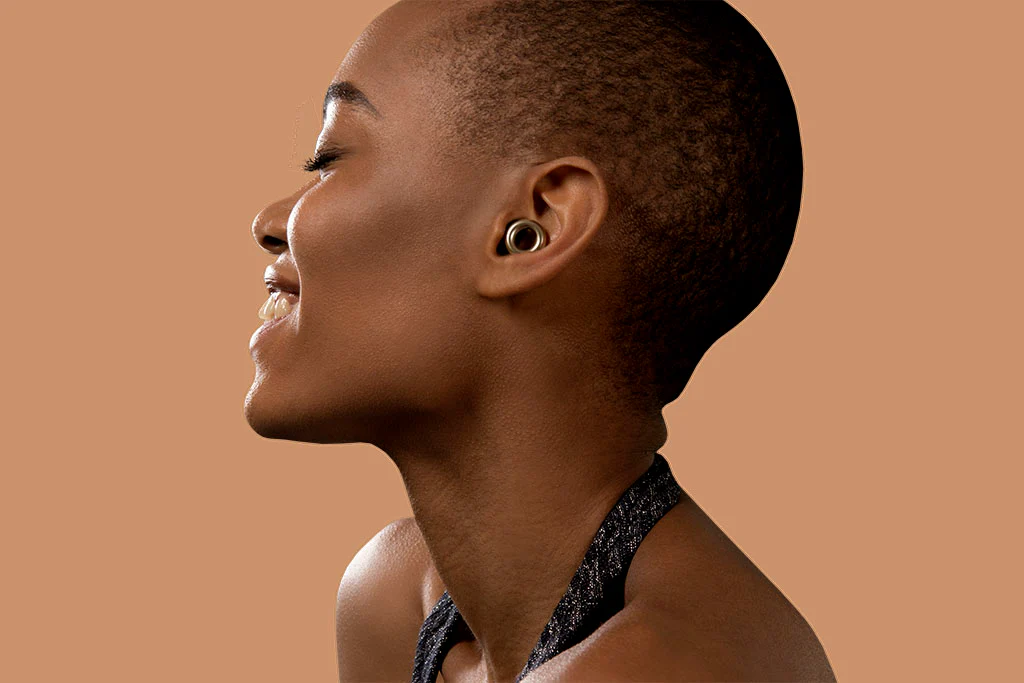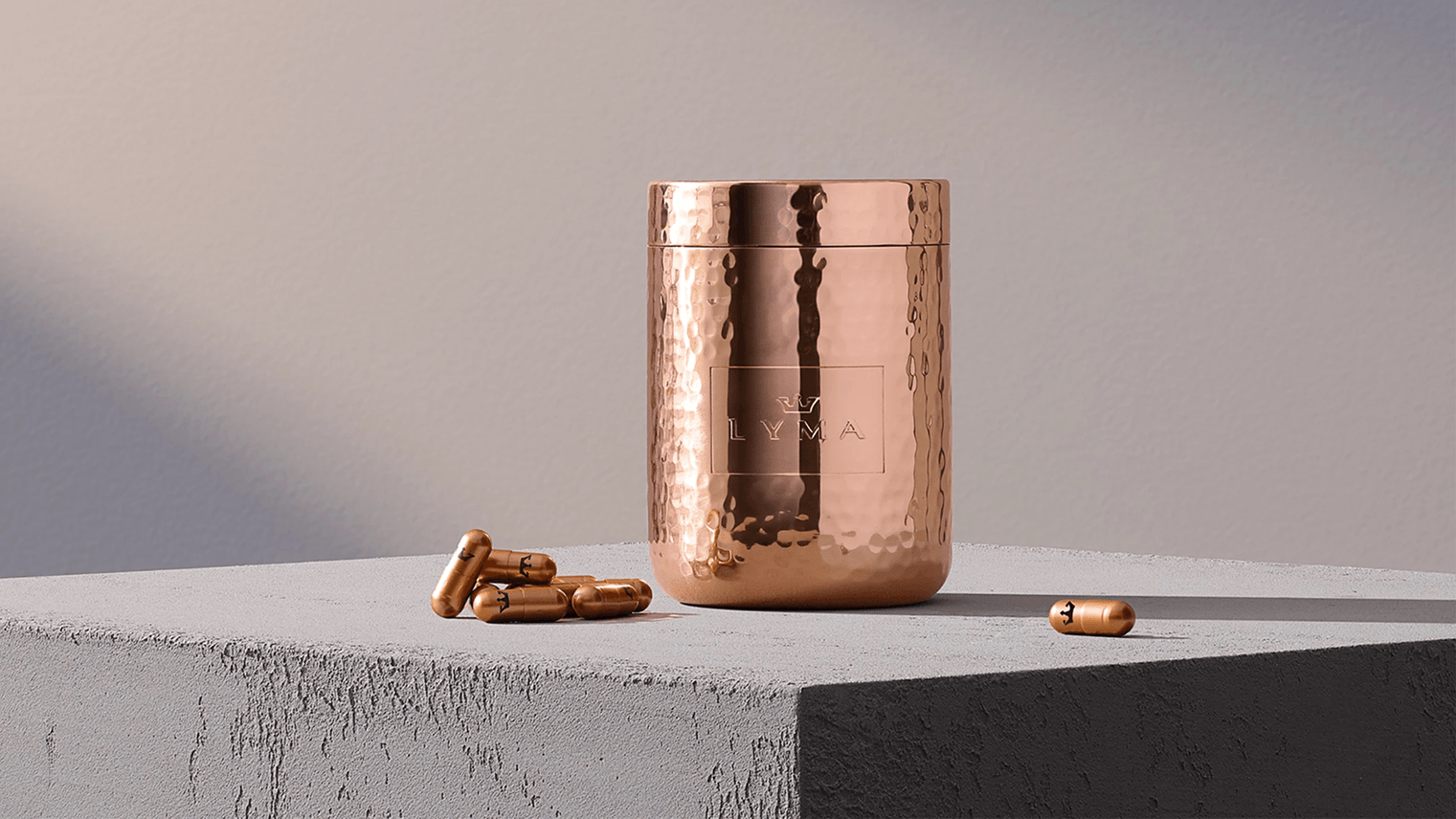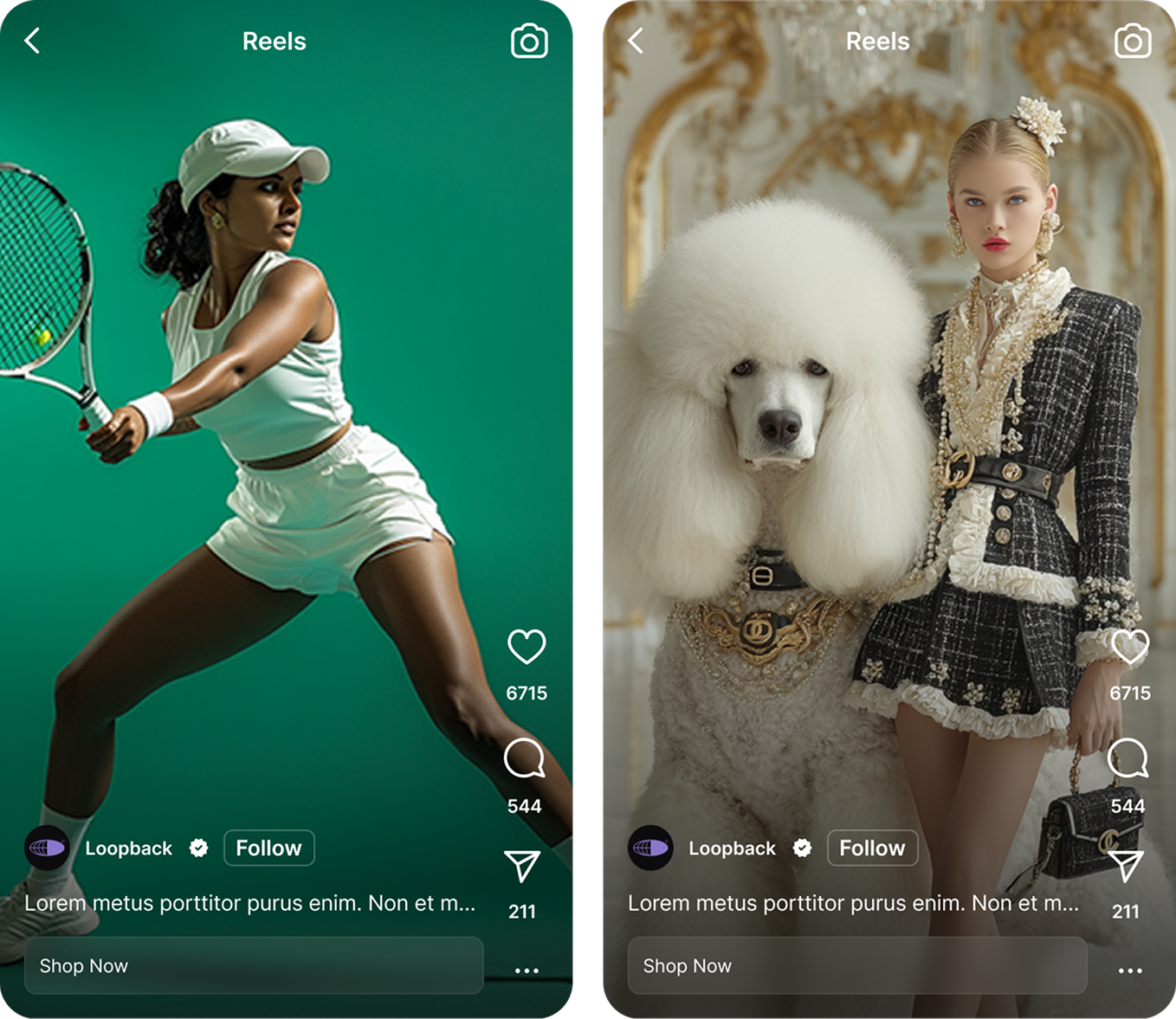Steven Lammertink
November 3, 2025
From Paid Social to Creator Media: How the Funnel Has Changed

November 3, 2025
Share
The Shift: Paid Social Is No Longer Just “Ads”
For more than a decade, paid social advertising defined how brands grew online. Platforms such as Meta, YouTube, and later TikTok turned targeting, optimization, and attribution into a precise science. Marketers could reach almost anyone, measure everything, and scale quickly. Entire DTC empires were built on that formula, engineered through pixel data, creative testing, and media efficiency. But over the past two years, a quiet revolution has reshaped that landscape. Audiences no longer respond to the same slick, brand-controlled assets that once filled their feeds. The modern consumer has developed what can only be described as advertising immunity, they scroll past anything that feels overly produced or algorithmically engineered. The irony is striking: the more sophisticated the ad systems became, the less effective the ads themselves felt.
Into that fatigue stepped a new kind of creative force, the creator. Creators brought back what algorithmic optimization had squeezed out: humanity, voice, and context. Their videos don’t look like commercials; they look like culture. They speak the language of their audience, imperfect, fast, and real. As a result, the center of gravity in digital advertising has shifted from brand media to creator media. Creator-led content now dominates the formats that matter most, Stories, Reels, Shorts, and in-feed video. When amplified through paid channels, these assets regularly outperform brand campaigns across every performance metric: lower CPMs, higher CTRs, and longer shelf life.
Across The Cirqle’s data set of more than a thousand campaigns, ads run from creator handles deliver 20 to 40 percent lower CPMs and more than double the click-through rate of studio-produced content. In many cases, creator assets continue to generate profitable returns three to five times longer than brand ads before performance decays. The conclusion is clear: paid social has evolved beyond its original definition. It’s no longer a place where brands buy attention. It’s where creators earn it, and brands amplify it.
What was once a media channel has become a living ecosystem powered by people. The traditional funnel of awareness, consideration, and conversion hasn’t vanished; it has simply collapsed into a single, creator-driven experience that spans every stage at once.
The New Funnel, How Creator Media Rewrote the Customer Journey
The traditional marketing funnel was built for an era of media separation, one where every stage of the customer journey had its own channel, its own team, and its own metrics. Brands would buy awareness through television or upper-funnel ads, nurture interest with remarketing or email, and finally convert customers through performance channels like paid search or Meta.
That architecture made sense when the path to purchase was linear and predictable. But the way consumers discover, evaluate, and buy products has changed completely. The funnel has collapsed, not because consumers became unpredictable, but because creators blurred the boundaries between storytelling and selling.
In the creator-driven landscape, a single post can move a consumer through multiple stages of the journey simultaneously. A 20-second TikTok video might introduce a product, demonstrate how it works, build social proof, and include a direct call to action, all in one scroll. The distinction between “top of funnel” and “bottom of funnel” no longer exists in the way performance marketers were trained to think about it.
This is the essence of Creator Media. It’s content that operates across the full funnel, discovery, validation, and conversion, without ever feeling like an ad. When audiences encounter a creator they trust, the awareness barrier is already lowered. The consideration phase happens in real time, driven by authenticity rather than targeting logic. The final click, purchase, or subscription is simply a natural continuation of the narrative, not a separate performance tactic.
The data confirms this new behavior. In campaigns powered by The Cirqle, more than 60 percent of sales attributed to creator ads occur within the first 24 hours of initial exposure, far faster than the delayed conversions typically associated with remarketing funnels. Creator content doesn’t just assist conversion; it compresses it.For brands, this means the funnel hasn’t disappeared, it has become frictionless. Instead of building discrete stages of awareness, consideration, and action, marketers now manage a continuum where all three occur within a single content experience.
And this continuum behaves differently. It’s faster, more dynamic, and more emotional. Consumers don’t step through it; they flow through it.
The Economics of Creator Media
The shift from paid social to creator media isn’t just creative, it’s economic. For most DTC marketers, the cost equation of advertising has fundamentally changed. The old model rewarded high production budgets, extended timelines, and incremental creative testing. The new model rewards speed, authenticity, and performance scalability.
When you analyze the numbers, the case for creator media becomes self-evident.
The Comparative Economics of Paid Social vs. Creator Media
Source: The Cirqle Data Index, 2023–2025 (aggregated across fashion, beauty, wellness, and consumer tech categories).
The economics tell a consistent story: creator media delivers more efficient production, lower distribution costs, and significantly higher returns per euro spent. It allows brands to reallocate creative spend directly into media budgets, where amplification compounds ROI rather than draining it.
Why the Cost Advantage Exists
There are three structural reasons why creator media outperforms traditional brand ads from a cost–return perspective:
- Decentralized Production:
Creator content is produced natively, no crews, no reshoots, no logistics overhead.
The result is lower fixed costs and faster creative velocity. - Algorithmic Preference:
Platforms like Meta and TikTok reward authenticity and watch time. Creator ads naturally trigger those signals, which reduces CPM without compromising reach. - Data Feedback Loops:
Through Cirqle’s first-party integrations with Meta, TikTok, and Shopify, performance data flows back into creator selection and campaign optimization. The more a brand scales, the smarter its creator portfolio becomes.
Case Study: Loop Earplugs, From Organic Buzz to Predictable Scale
Loop Earplugs exemplifies how creator media economics translate into measurable growth. Initially, Loop focused on organic influencer campaigns, achieving strong visibility but limited conversion. After integrating with The Cirqle’s paid amplification workflow, the brand transformed its model:
- Activated 70 creators across 14 markets using predictive RoAS filters.
- Identified top-performing content and turned it into Partnership Ads within minutes.
- Invested €2,700 in amplification, generating €13,000 in revenue, a 4.8× ROAS.
- Maintained profitability across both organic and paid distribution for more than a month.

This is creator media in motion: a cost-efficient, high-performance loop where content is tested organically, scaled through paid, and refined through data.
Case Study: Lyma Life, Hybrid Storytelling with Measurable Impact
Luxury wellness brand Lyma Life provides a contrasting case. The company blended studio-led storytelling with creator amplification to balance brand equity and conversion efficiency.
- Brand Ads: 1.8× ROAS, strong upper-funnel awareness.
- Creator Ads: 5.2× ROAS, 34% lower CPA.
- Brand Recall: +71% uplift when both formats were run in tandem.

Lyma’s experience shows that creator media doesn’t replace brand production, it multiplies its effectiveness by making each asset measurable, extendable, and performance-optimized.
The Broader Shift: Media Efficiency Redefined
Creator media changes how brands think about efficiency. Instead of allocating 70% of budget to creative production and 30% to media, top-performing DTC teams on The Cirqle invert that ratio, spending the majority on amplification and optimization while maintaining a lean, agile creative pipeline.
This shift also changes the economics of scale. In the traditional model, scaling media spend increased risk: if creative fatigued or failed to convert, costs ballooned. In the creator media model, scaling spend increases certainty, every euro invested generates more data that strengthens predictive models and informs future creator selection.
Over time, the result is a performance flywheel:
- Each campaign produces performance data.
- That data improves predictive RoAS accuracy.
- Smarter creator selection reduces CAC.
- Lower CAC enables more amplification.
- More amplification generates new data.
The cycle repeats, compounding efficiency each quarter.
The Organizational Shift: Why Performance Teams Now Own Creator Media
The transition from paid social to creator media has not only changed how brands advertise, it has changed who runs advertising altogether. A few years ago, influencer marketing lived under brand, PR, or social departments. These teams focused on aesthetics, storytelling, and awareness, important but loosely measurable outcomes. Today, as creator media becomes measurable to the euro, responsibility is migrating squarely into performance and growth teams.
This shift is happening because creator marketing now behaves like paid performance: it’s data-driven, trackable, and accountable to return on ad spend.
From Brand-Led to Performance-Driven
In the traditional model, brand teams managed influencer collaborations while performance teams ran Meta and TikTok Ads. Each side worked in parallel, rarely intersecting. The results were predictable, strong reach metrics, weak ROI visibility, and a fragmented view of impact.
Now that creator content can be launched, tracked, and optimized like a paid ad, the old divide no longer makes sense. Performance marketers are stepping in because they have the tools, the budgets, and the accountability structure to manage creator spend as they would any other acquisition channel. At The Cirqle, we’ve seen this transition firsthand. In 2022, roughly 30% of client users came from brand or social teams. By mid-2025, more than 70% of Cirqle users identify as performance, growth, or acquisition leads.
The role of the brand team hasn’t disappeared, it’s evolved. They define the creative and narrative direction, while performance teams execute, test, and scale that narrative with data precision. This collaboration is producing better outcomes for both sides: stronger creative consistency and demonstrably higher returns.
How Creator Media Changes Operating Models
The emergence of creator media has created a new type of hybrid marketing organization, one that blends storytelling, analytics, and media buying into a single operating system.
Leading brands now structure their creator programs around three integrated functions:
- Creative Strategy: defines brand voice, content pillars, and thematic direction.
- Performance Execution: manages amplification, targeting, and optimization through Partnership Ads.
- Analytics & Insights: tracks RoAS, attribution, and predictive modeling to guide reinvestment.
All three run on The Cirqle platform, allowing teams to operate from the same dashboard instead of relying on disconnected spreadsheets and screenshots. The result is a more agile, efficient organization where creative and media no longer compete, they compound.
Case Study: Matt Sleeps, Turning Creators into a Scalable Performance Channel
Dutch mattress brand Matt Sleeps offers a compelling example of how organizational realignment unlocks performance gains.
Historically, the company approached influencer marketing through its brand team, focusing on lifestyle content and visual consistency. The results were strong in engagement but unpredictable in sales. In early 2024, Matt Sleeps shifted its creator operations under the performance marketing team and onboarded The Cirqle to connect creator content directly to paid media and attribution.
Within the first three months of this transition, the impact was immediate:
- 34% lower cost per acquisition (CPA) compared to previous paid social campaigns.
- 3.9× higher ROAS on creator-amplified ads versus studio-produced content.
- Campaign launch time reduced by 75% thanks to The Cirqle’s in-platform briefing, content approval, and Turn Into Ads flow.
Perhaps most importantly, the shift aligned internal incentives. Brand and performance teams worked from the same dataset, using unified metrics for creative quality and financial efficiency. Creators were no longer briefed for “engagement”, they were briefed for conversion-driven storytelling.
Matt Sleeps now treats creator content as a core performance lever, continuously reinvesting in top-performing creators through Cirqle’s predictive RoAS insights. The program has since evolved into an always-on model, driving a steady stream of revenue while maintaining creative consistency across every activation.

The Broader Pattern
The Matt Sleeps story is not unique. We’ve observed the same transformation across brands like Lyma Life, Loop Earplugs, and Secret Sales, each began by running creator programs under brand teams, and each saw exponential efficiency gains once performance teams took ownership. This shift reflects a broader truth: in today’s ecosystem, creators are not an awareness tactic; they are a conversion channel. That recognition changes everything about internal workflows, from how teams are structured to how success is measured.
The Future of Media,The Rise of the Creator Operating System
What began as a creative evolution has quietly become a systemic one. Creator media isn’t a new format, it’s a new infrastructure for how digital growth works.
Paid social gave marketers scale and precision. It taught brands how to reach the right audience at the right time. Creator media adds something that paid social never could: credibility. It brings human context, emotional resonance, and community validation into the mechanics of conversion. The fusion of those two forces, performance precision and creator authenticity, is redefining the modern marketing stack. Every stage of the funnel, from discovery to purchase to advocacy, is now powered by people, not pixels.
And this evolution demands a new kind of system, one designed for the era of Creator Operating Models.
From Campaigns to Continuous Systems
The traditional marketing rhythm, brief, launch, report, repeat, is being replaced by continuous feedback loops. Creator content is no longer a campaign input; it’s a dynamic data stream that informs what to make, who to show it to, and how much to spend. On The Cirqle, that loop is automated.Creators are discovered through predictive RoAS scoring. Top-performing content is amplified instantly as Partnership Ads. Sales attribution flows directly into dashboards synced with Shopify and Meta Ads Manager. And the next campaign begins not from zero, but from insight.
It’s a complete system and operating framework for growth.
The New Media Playbook
In this world, the winners won’t be the brands that spend the most; they’ll be the ones that learn the fastest.
Every creator partnership becomes an experiment.
Every impression becomes a data point.
Every sale feeds back into selection and strategy.
This is how brands like Matt Sleeps, Loop Earplugs, and Lyma Life now operate, using The Cirqle to merge storytelling and performance into one continuous motion. They’ve moved beyond paid social as a channel and built creator media ecosystems that scale on their own momentum.
What It Means for Marketers
The implications are far-reaching. Performance teams are no longer managing ads, they’re managing networks of people who create, distribute, and convert at scale. Brand teams aren’t designing static narratives, they’re designing frameworks for creators to interpret authentically. And executives aren’t measuring “influencer impressions” anymore, they’re tracking creator-attributed revenue right alongside CAC, LTV, and blended ROAS.
The Cirqle didn’t join that transformation; it made it measurable. By merging first-party data, paid amplification, and predictive analytics, the platform turns creator marketing from a creative experiment into an accountable, high-performing media discipline.
The Future Belongs to Systems, Not Campaigns
The evolution from paid social to creator media mirrors a broader truth about digital commerce:
growth no longer comes from running campaigns, it comes from building systems. Creator media is the next system. It scales trust the way paid social scaled reach.It compounds efficiency the way automation compounded targeting. And it rewards agility over aesthetics.
Brands that adapt to this new reality, that treat creators not as occasional partners but as programmable, data-informed growth channels, will dominate the next decade of performance marketing. And The Cirqle will continue to power that shift, the operating system where creators, content, and commerce finally converge.
Call to Action
The era of paid social is ending. The age of creator media has begun. If your team is still running influencer campaigns like isolated experiments, you’re competing against brands that are already running systems. It’s time to bridge creativity with performance, storytelling with data, and people with precision. It’s time to operate on The Cirqle.
👉 Book a demo and see how top DTC brands scale faster, and spend smarter, with the world’s first Creator Operating System.
Stop Searching. Start Building Launch Relationships
Get started with The Cirqle today.
Give your team the power and speed they need to find the right partners and grow your brand.
%201.avif)






